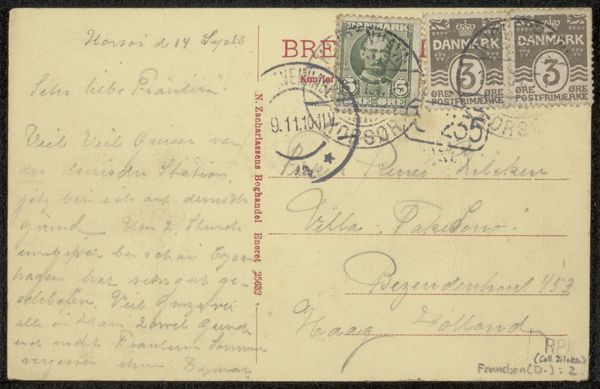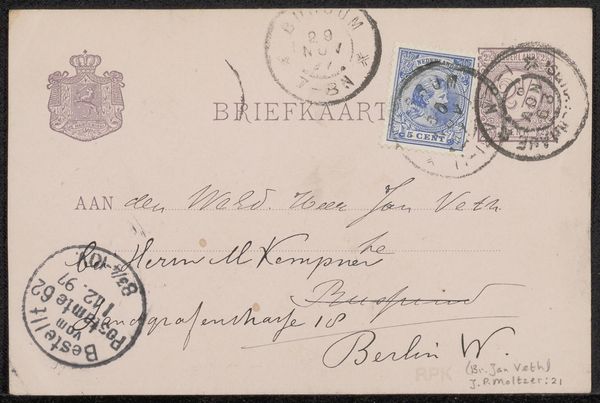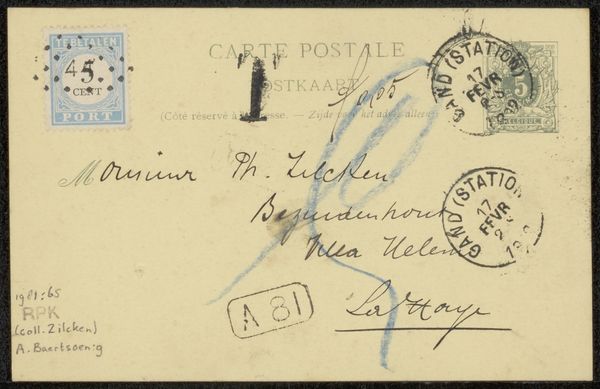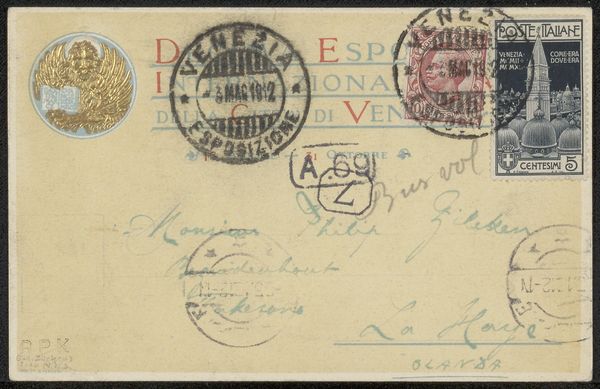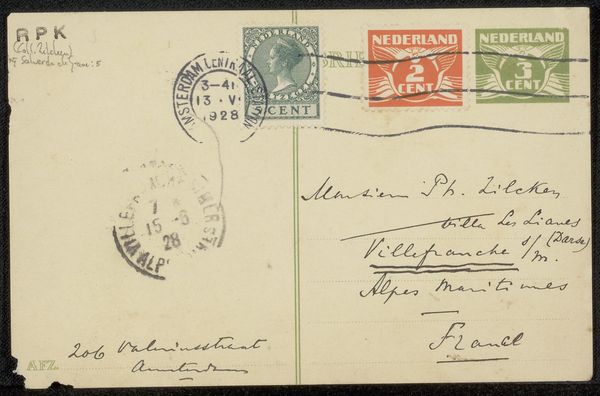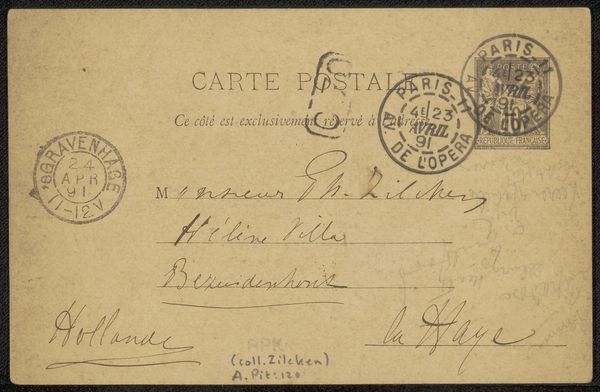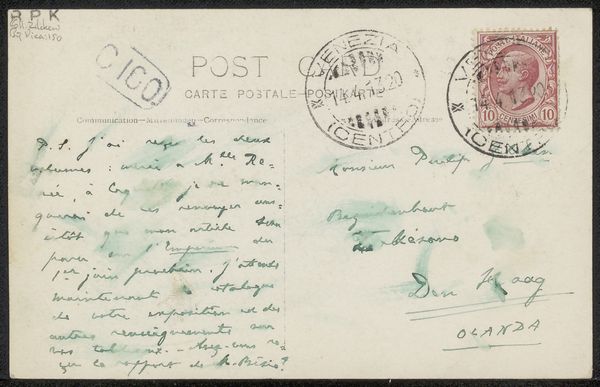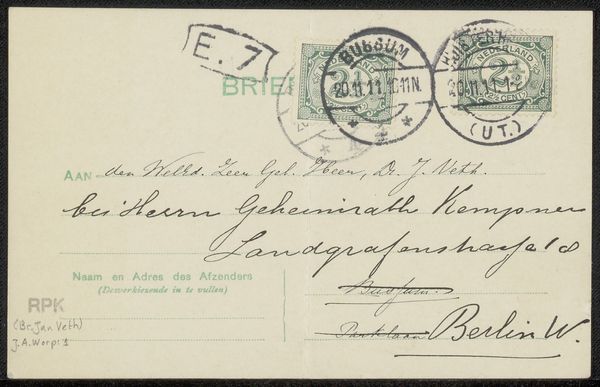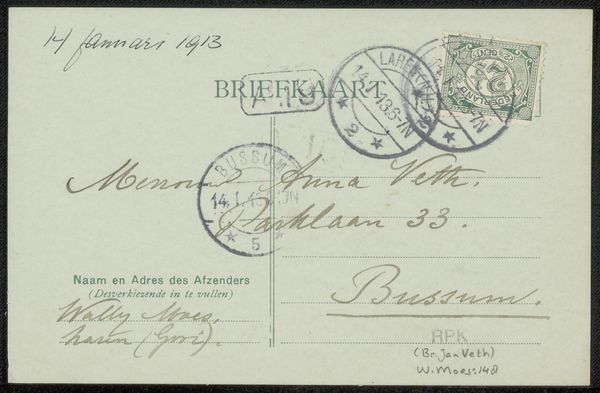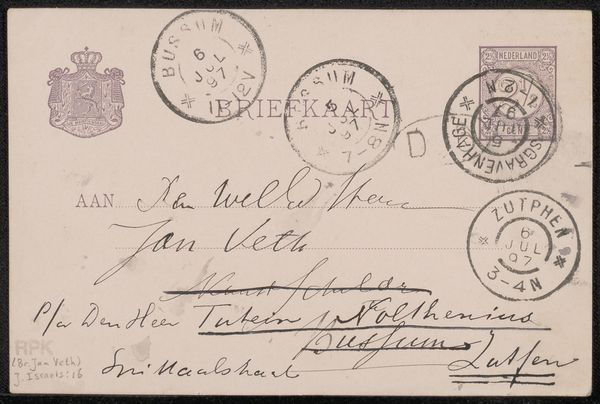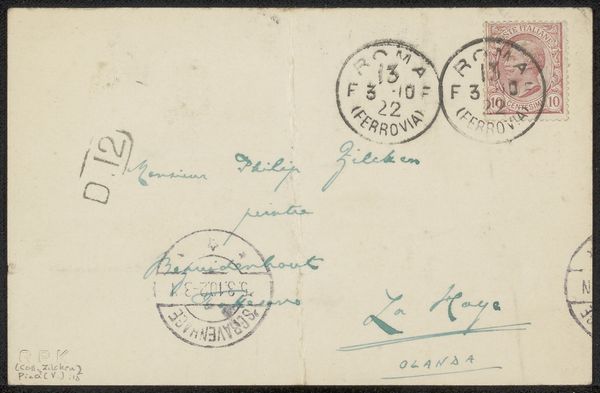
drawing, paper, photography, ink, pen
#
portrait
#
drawing
#
comic strip sketch
#
hand-lettering
#
hand drawn type
#
hand lettering
#
paper
#
photography
#
personal sketchbook
#
ink
#
hand-drawn typeface
#
ink drawing experimentation
#
sketchbook drawing
#
pen
#
storyboard and sketchbook work
#
sketchbook art
Copyright: Rijks Museum: Open Domain
Editor: Here we have "Briefkaart aan Saskia Delprat-Veth," a postcard to Saskia Delprat-Veth, created around 1899 by Jacoba Cornelia Jolles-Singels. It seems to be primarily made of ink on paper, perhaps a photograph? It's densely covered with stamps and handwriting, creating a layered effect. How do you approach analyzing a piece like this? Curator: The materiality of this postcard is fascinating. Think about the paper itself – its availability, its cost, how it was manufactured and distributed. These factors governed who had access to create and communicate in this way. The ink, too – what was its composition? Was it mass-produced or created in smaller batches, impacting consistency and legibility? Editor: That's interesting; I hadn’t really thought about that. What about the postal marks? Curator: Exactly. Each stamp and postmark represents a point of transit, of labour involved in moving this message. It speaks to the systems of communication and commerce that connected people at the time. Were these stamps commonplace or more rare and costly, and who had access to these modes of communication? Consider how this contrasts to digital methods of correspondence today, regarding ease, material costs, and so on. What’s lost and what’s gained? Editor: So, by examining these elements, we can start to understand not just the artwork itself, but the social and economic forces that shaped its creation and distribution? Curator: Precisely! Even the handwriting provides a link to the labor of communicating and making of art. Understanding production processes, materials and access is key. Editor: It completely reframes my understanding of this postcard. It’s no longer just a personal message; it becomes a document reflecting a whole network of material conditions and social interactions. Curator: Indeed. The postcard reveals not only a connection between two people but also to the material processes required for that exchange to happen, enriching our viewing of a historical piece.
Comments
No comments
Be the first to comment and join the conversation on the ultimate creative platform.
